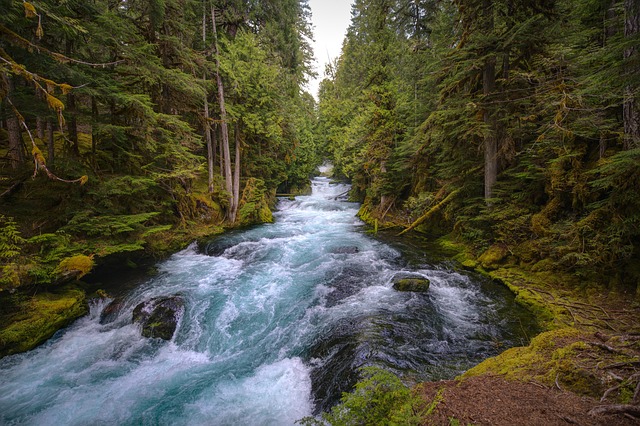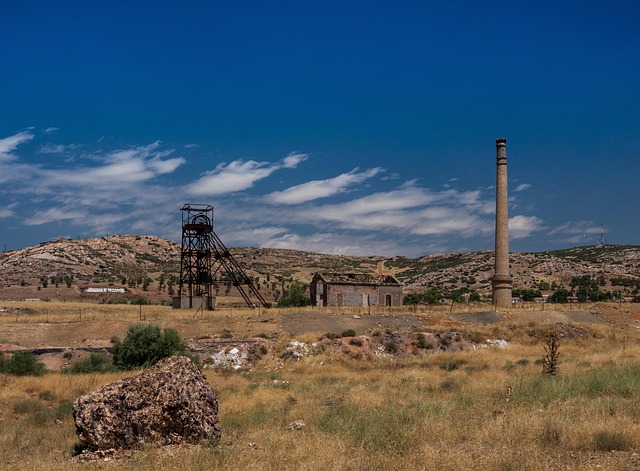In the mid-19th century, Lane County, Oregon, experienced a gold rush that attracted Lane County prospectors from diverse backgrounds. This influx transformed the county's history, economy, and environment, leaving an indelible mark. Lane County prospectors braved harsh conditions and challenging terrains, drawn by untapped gold reserves, sparking an economic boom and population growth. While fueling infrastructure development and fostering social mix, the gold rush also had severe environmental consequences. Today, local historical efforts preserve the era's legacy through museums, artifacts, and self-guided tours, honoring the resilience of Lane County prospectors and their impact on Oregon's history.
“In the mid-19th century, Oregon’s gold rush era transformed Lane County into a bustling hub for prospectors seeking their fortune. This period left an indelible mark on the region’s history and economy. From its geographical advantages that drew eagerLane County prospectors to its environmental consequences, this article delves into the multifaceted impact of the Gold Rush. We explore the challenges faced by these pioneers, the economic booms, and the lasting legacy they left behind, shedding light on Lane County’s rich historical tapestry.”
- Historical Context: The Gold Rush in Oregon
- Lane County's Geographical Advantages for Prospecting
- Life and Challenges Faced by Lane County Prospectors
- Economic Boom and Social Impact on the Region
- Environmental Consequences of the Gold Rush Era
- Legacy and Historical Preservation Efforts Today
Historical Context: The Gold Rush in Oregon

In the mid-19th century, Oregon’s gold rush era captivated Lane County, attracting a surge of Lane County prospectors eager to strike it rich. The discovery of gold in various locations across the county fueled an influx of settlers and miners, transforming its landscape and social fabric. Riverbanks and mountains became bustling hubs of activity as prospectors scoured the territory for valuable veins of gold. This period left an indelible mark on Lane County’s history, shaping its development and contributing to its diverse cultural tapestry.
The Gold Rush brought about a wave of exploration and settlement, with Lane County prospectors venturing into uncharted territories in search of fortunes. They navigated the challenging terrain, enduring harsh conditions and competition from other miners. Despite the difficulties, the promise of wealth attracted individuals from diverse backgrounds, each driven by the allure of Oregon’s untapped gold reserves. This historical context sets the stage for understanding the profound impacts that followed, shaping Lane County into what it is today.
Lane County's Geographical Advantages for Prospecting

Lane County, Oregon, presented unique geographical advantages that drew many prospectors during the Gold Rush era. Its central location in the Willamette Valley offered easy access to transportation routes, facilitating the movement of goods and people. The county’s diverse terrain, ranging from lush forests to rugged mountains, provided a variety of prospecting opportunities. Rivers and streams, like the McKenzie River, were particularly attractive as they often carried rich deposits of gold and other minerals.
The fertile soil and abundant natural resources of Lane County also contributed to its appeal for prospectors. The area’s geological formations, including ancient rivers and volcanic activity, created ideal conditions for mineral accumulation. These factors combined made Lane County a hotspot for gold prospecting, attracting determined individuals seeking their fortunes in the midst of Oregon’s rich historical landscape.
Life and Challenges Faced by Lane County Prospectors

Life for Lane County prospectors during the gold rush era was a blend of exhilaration and hardship. They arrived in droves, drawn by tales of untapped riches buried beneath the lush forests and rolling hills of Oregon’s southern region. These intrepid individuals left behind their previous lives—from farmers to skilled workers—in search of fortune and glory. The promise of gold fueled their determination, even as they faced formidable challenges.
The daily struggles included backbreaking work in harsh, remote locations with little comfort or safety. They had to navigate treacherous terrain, battle extreme weather conditions, and contend with the ever-present danger of injuries from accidents or clashes with rival prospectors. Furthermore, the constant need for sustenance and shelter tested their resilience, while the isolation took a psychological toll. Despite these challenges, the spirit of Lane County prospectors remained undaunted, driven by the allure of striking it rich and shaping the future of their community.
Economic Boom and Social Impact on the Region

The gold rush era in Lane County, Oregon brought about an economic boom that transformed the region. Prospectors from all over flocked to the area, driven by the promise of riches. This influx led to a rapid expansion in population and infrastructure development. New towns sprang up along the rivers where gold was discovered, each with its own unique character and vibrant atmosphere. The demand for goods and services increased exponentially, stimulating local businesses and fostering a thriving market. This period saw an unprecedented surge in commercial activities, from general stores and saloons to mining equipment suppliers and blacksmiths.
Socially, the county underwent significant changes as well. The diverse group of prospectors brought together people from various backgrounds, cultures, and social standings. This mix led to the formation of tight-knit communities and a sense of shared purpose among the residents. However, it also resulted in conflicts over resources and land ownership, as the once-peaceful landscapes were now dotted with mining claims. Despite these challenges, the spirit of camaraderie and cooperation endured, fueled by the prospectors’ collective desire to build a better future for themselves and their families in this promising new territory.
Environmental Consequences of the Gold Rush Era

The gold rush in Lane County, Oregon, brought a surge of prospectors flocking to the region, each seeking their fortune. This influx led to significant environmental consequences as the county’s natural landscape underwent rapid transformation. The relentless search for gold resulted in extensive deforestation as trees were cleared for mining operations and settlement sites. Rivers and streams were also affected, with many being diverted or dammed to facilitate mining activities, causing severe erosion and altering the local hydrology.
The mining process itself was a major contributor to environmental degradation. Toxic chemicals like mercury were often used to extract gold, contaminating soil and water sources. Additionally, the rapid development of infrastructure, including roads and settlements, led to increased logging, land clearing, and habitat destruction for native wildlife. The once-vibrant ecosystem struggled to recover from these impacts, leaving a lasting mark on Lane County’s environmental heritage.
Legacy and Historical Preservation Efforts Today

The legacy of Lane County’s gold rush era endures through stories passed down by local historians and the remnants left behind in the form of historic sites. Today, efforts to preserve this rich heritage are evident in museums showcasing the tools and artifacts from that time, as well as self-guided tours that allow modern-day prospectors to follow in the footsteps of their predecessors. Local historical societies play a vital role in maintaining these archives, ensuring that the spirit of exploration and determination that defined Lane County’s past remains alive for future generations.
These preservation initiatives not only safeguard the physical traces of the gold rush but also keep alive the stories and experiences of the lane county prospectors who braved the wilderness and contributed to shaping the region. By doing so, they foster a deeper understanding of Oregon’s history, making it a living testament to the resilience and resourcefulness of those who came before.
